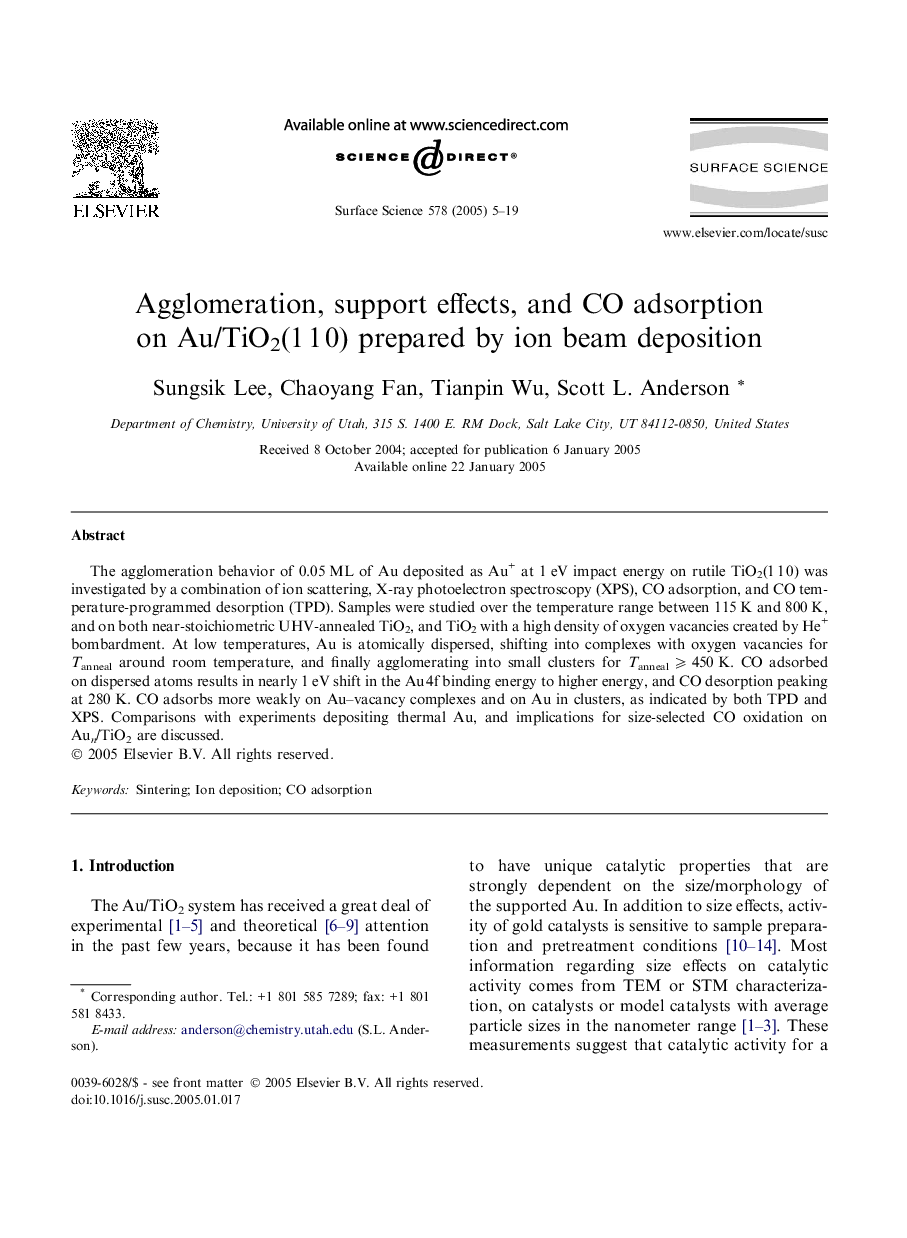| Article ID | Journal | Published Year | Pages | File Type |
|---|---|---|---|---|
| 9595687 | Surface Science | 2005 | 15 Pages |
Abstract
The agglomeration behavior of 0.05 ML of Au deposited as Au+ at 1 eV impact energy on rutile TiO2(1 1 0) was investigated by a combination of ion scattering, X-ray photoelectron spectroscopy (XPS), CO adsorption, and CO temperature-programmed desorption (TPD). Samples were studied over the temperature range between 115 K and 800 K, and on both near-stoichiometric UHV-annealed TiO2, and TiO2 with a high density of oxygen vacancies created by He+ bombardment. At low temperatures, Au is atomically dispersed, shifting into complexes with oxygen vacancies for Tanneal around room temperature, and finally agglomerating into small clusters for Tanneal ⩾ 450 K. CO adsorbed on dispersed atoms results in nearly 1 eV shift in the Au 4f binding energy to higher energy, and CO desorption peaking at 280 K. CO adsorbs more weakly on Au-vacancy complexes and on Au in clusters, as indicated by both TPD and XPS. Comparisons with experiments depositing thermal Au, and implications for size-selected CO oxidation on Aun/TiO2 are discussed.
Keywords
Related Topics
Physical Sciences and Engineering
Chemistry
Physical and Theoretical Chemistry
Authors
Sungsik Lee, Chaoyang Fan, Tianpin Wu, Scott L. Anderson,
